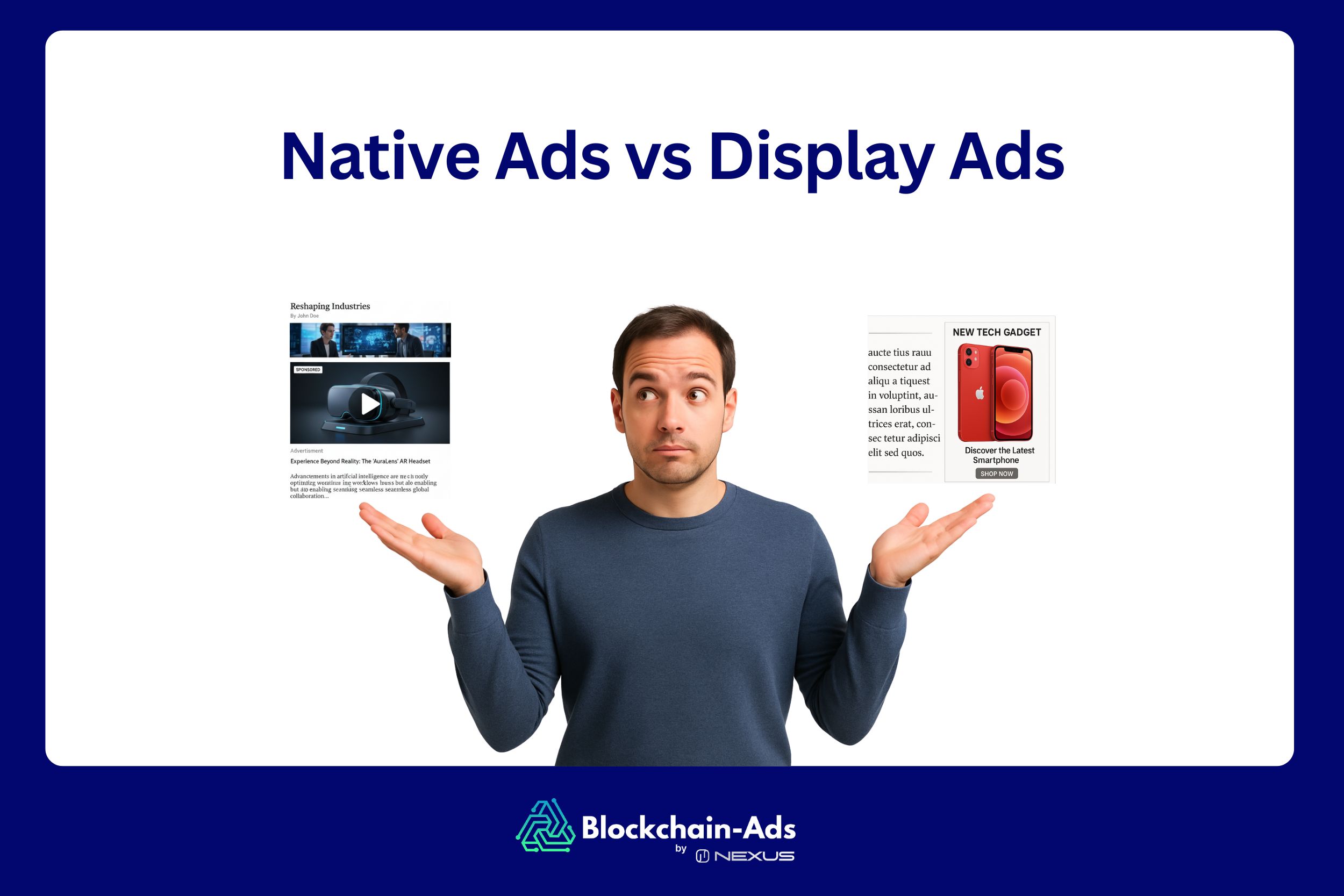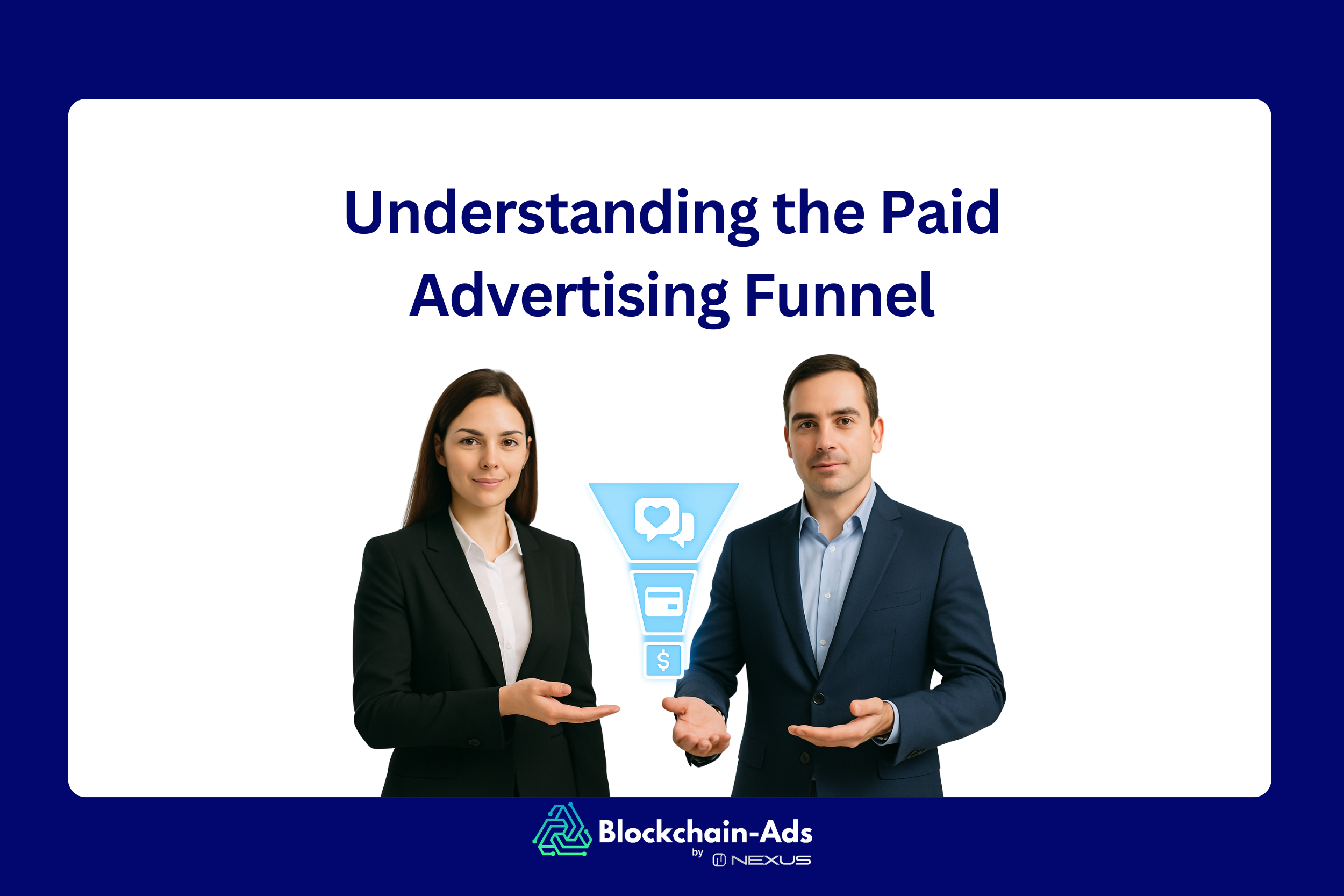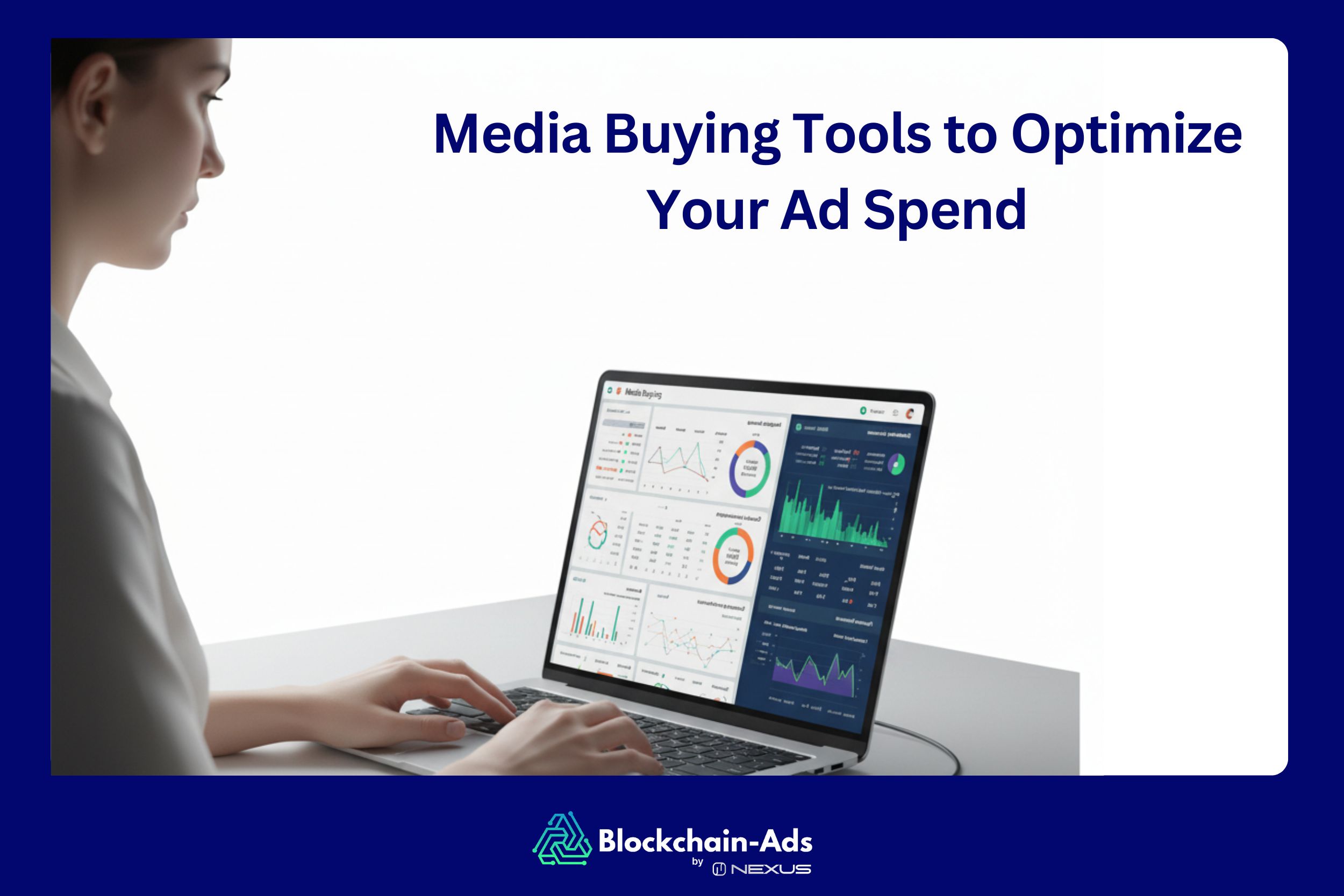Мобильная реклама 2025: исчерпывающее руководство для российского рынка
- Cointelegraph Formula предлагает различные форматы рекламы 8 миллионам читателей в месяц в более чем 190 странах, используя свое надежное имя в сфере криптовалют.
Мобильная реклама — это любая платная реклама, размещаемая на смартфонах и планшетах российских пользователей. Поскольку россияне проводят более 58% своего времени в интернете на мобильных устройствах, таргетинг на мобильную аудиторию стал критически важным для отечественного бизнеса.
Подумайте о своих собственных привычках — вы наверняка проверяете телефон десятки раз в день. Именно такое поведение российские рекламодатели активно используют для продвижения своих товаров и услуг на просторах РФ.
Мобильная реклама в России кардинально изменилась: из вспомогательного инструмента она превратилась в основную маркетинговую стратегию. Глобальные расходы на мобильную рекламу достигли 400 миллиардов долларов в 2024 году, а российский рынок демонстрирует устойчивый рост 15-20% ежегодно.
Данное руководство охватывает всё необходимое для российских маркетологов:
- фундаментальные принципы мобильной рекламы в российских реалиях
- механизмы функционирования мобильной рекламы в отечественной экосистеме
- наиболее эффективные форматы для российской аудитории
- пошаговый алгоритм запуска успешных мобильных кампаний
- актуальная стоимость мобильной рекламы на российском рынке
- ведущие платформы мобильной рекламы для работы в России
Также мы детально сравним мобильную рекламу с альтернативными цифровыми каналами. По завершении изучения руководства вы получите исчерпывающие знания для запуска результативных мобильных кампаний в 2025 году.
Что представляет собой мобильная реклама?
Мобильная реклама — это любые рекламные форматы, отображаемые на мобильных устройствах: смартфонах и планшетах российских пользователей. Сюда входят SMS-реклама, внутриприложенческие баннеры, push-уведомления и мобильная видеореклама. Данные объявления адаптируются с учетом поведенческих паттернов, геолокации и предпочтений аудитории для обеспечения максимальной релевантности.
Мобильная реклама охватывает российских потребителей круглосуточно в любой точке страны. Это кардинально отличается от традиционной цифровой рекламы, которая воздействует на пользователей через различные устройства.
Популярные форматы мобильной рекламы в России:
- Внутриприложенческие баннеры: статические или анимированные объявления в российских приложениях — ВКонтакте, Одноклассниках, Авито, Яндекс.Картах
- Rewarded-видеореклама: короткие ролики в мобильных играх, за просмотр которых игроки получают внутриигровые бонусы
- Push-уведомления: персонализированные сообщения о скидках, новинках и эксклюзивных предложениях российских брендов
- SMS-маркетинг: текстовые рекламные сообщения, особенно востребованные в ритейле и сфере услуг
Российские потребители активно используют смартфоны для онлайн-шопинга через Wildberries и Ozon, просмотра контента в YouTube и ТикТок, общения в мессенджерах и мобильного банкинга. Согласно исследованиям, россияне тратят около 90% мобильного времени в приложениях, что делает in-app рекламу исключительно результативной.
Принципы функционирования мобильной рекламы
Мобильная реклама в России работает через сложную экосистему платформ, взаимодействующих в режиме реального времени. При каждом открытии приложения российским пользователем запускается мгновенный цифровой аукцион продолжительностью менее 100 миллисекунд.
Ключевые участники российской мобильной рекламной экосистемы:
- Мобильные SDK — программные модули в приложениях, собирающие пользовательские данные и демонстрирующие победившие в торгах объявления
- SSP-платформы (Supply-Side Platform) — соединяют российских разработчиков приложений с рекламодателями, управляя продажей рекламного инвентаря
- DSP-платформы (Demand-Side Platform) — помогают российским рекламодателям находить оптимальные рекламные размещения и участвовать в аукционах
- Рекламные биржи (Ad Exchange) — цифровые торговые площадки для купли-продажи рекламных мест
Алгоритм работы в российской экосистеме:
При запуске популярного российского приложения (Сбербанк Онлайн, Яндекс.Карты, ВКонтакте) SDK мгновенно передает профильные данные — возраст, местоположение, интересы, модель устройства — на SSP-платформу. SSP незамедлительно транслирует данную рекламную возможность на биржи, оповещая релевантные DSP.
Далее российские рекламодатели конкурируют в мгновенном аукционе: например, МТС предлагает 120 рублей за показ, а Мегафон — 145 рублей. Реклама участника с наивысшей ставкой отображается на экране пользователя.
Данная интеллектуальная система анализирует геопозицию российского пользователя, поведенческие паттерны, демографические характеристики и спецификации устройства для демонстрации максимально релевантных объявлений.
Форматы мобильной рекламы
Мобильная реклама в России представлена множеством форматов, каждый из которых оптимально подходит для достижения конкретных маркетинговых целей. Основные типы мобильных объявлений для российских брендов:
- Баннерная реклама — компактные прямоугольные блоки в верхней или нижней части экрана. Экономически эффективны для российского бизнеса и минимально нарушают пользовательский опыт. Недостатки: баннерная слепота и случайные клики.
- Интерстициальная реклама — полноэкранные объявления в естественных паузах (между уровнями игр, переходами между разделами). Обеспечивают максимальную видимость, но требуют деликатного размещения во избежание раздражения российских пользователей.
- Видеореклама — короткие 15-30-секундные ролики, исключительно результативные в российском сегменте. Поскольку мобильные видео не воспроизводятся фоново, гарантируют полное внимание аудитории. Востребованы в YouTube, ТикТок и мобильных играх.
- Playable-реклама — интерактивные демо-версии игр или приложений, позволяющие протестировать продукт до установки. Особенно популярны в российском геймдеве благодаря высоким показателям конверсии.
- Rewarded-реклама — полноэкранные объявления с системой вознаграждений: игровая валюта, скидки, премиум-функции за просмотр. Высокие показатели добровольного просмотра делают их фаворитами российских мобильных разработчиков.
- Нативная реклама — объявления, органично интегрированные в контент приложения. Воспринимаются как естественная часть интерфейса, снижая рекламное сопротивление российской аудитории и повышая CTR.
- Rich Media-реклама — мультимедийные объявления с анимацией, интерактивными элементами и спецэффектами. Включают возможности свайпов, встряхиваний и других взаимодействий, популярных среди молодой российской аудитории.
- In-app реклама — собирательный термин для всех рекламных форматов внутри мобильных приложений. Охватывает перечисленные выше типы, оптимизированные под специфику каждого приложения для максимальной интеграции в UX.
Российские маркетологи зачастую комбинируют несколько форматов в рамках единой кампании для максимизации охвата, вовлеченности и конверсий среди различных сегментов мобильной аудитории.
Стоимость мобильной рекламы в России
Стоимость мобильной рекламы на российском рынке варьируется в зависимости от формата, точности таргетинга и выбранной платформы. Актуальные ценовые модели для российских рекламодателей:
- CPM (Cost Per Mille) — стоимость 1000 показов: 50-500 рублей в зависимости от качества аудитории
- CPC (Cost Per Click) — стоимость клика: 5-150 рублей в зависимости от конкурентности ниши
- CPA (Cost Per Action) — стоимость целевого действия: 100-3000 рублей за конверсию
Средняя стоимость качественной мобильной рекламы в России составляет 90-130 рублей за CPM и 20-50 рублей за CPC. Наиболее дорогие ниши: финансовые услуги, недвижимость и автомобили.
Преимущества мобильной рекламы для российского бизнеса
Мобильная реклама предоставляет российским компаниям эксклюзивные конкурентные преимущества, недостижимые традиционными рекламными каналами. Ключевые выгоды:
- Круглосуточный доступ к российским потребителям: Мобильная реклама обеспечивает контакт с клиентами 24/7 в любой точке России. Учитывая, что 78% российского интернет-трафика генерируется мобильными устройствами, ваши объявления достигают целевой аудитории за секунды после запуска кампании.
- Прецизионный таргетинг российской аудитории: Отечественные рекламодатели могут использовать богатые пользовательские данные для показа рекламы высокопотенциальным сегментам. Геотаргетинг позволяет адаптировать кампании под региональную специфику — от столичного региона до дальневосточных территорий.
- Гиперперсонализация для российского рынка: Геолокационные технологии позволяют российскому бизнесу отправлять ультраперсонализированную рекламу. Например, сети быстрого питания могут предлагать обеденные акции сотрудникам бизнес-центров российских мегаполисов в реальном времени.
- Единообразный брендинг на всех каналах: Мобильная реклама гарантирует консистентность сообщений российского бренда. Независимо от канала контакта — мобильное приложение, веб-сайт или офлайн-точка — потребитель получает унифицированный брендовый опыт.
- Вирусный потенциал в российских соцсетях: Креативная мобильная реклама может органично распространяться через ВКонтакте, Одноклассники и Telegram, обеспечивая дополнительные показы без увеличения медиабюджета.
Данные преимущества превращают мобильную рекламу в незаменимый инструмент российского бизнеса для построения эффективных взаимоотношений с мобильной аудиторией.
Вызовы мобильной рекламы в российских реалиях
При значительных преимуществах мобильная реклама в России сопряжена с определенными рисками, требующими профессионального управления:
- Молниеносное распространение негативного опыта: Неудачная или агрессивная реклама может мгновенно стать вирусной в российских социальных сетях, причиняя долгосрочный ущерб репутации бренда в отечественном информационном пространстве.
- Компромиссы между скоростью и качеством: Стремление к оперативному запуску может привести к ошибкам в текстах, неточностям или недоработанному дизайну, что критично при работе с взыскательной российской аудиторией.
- Ограничения малых форматов: Компактные размеры мобильной рекламы лимитируют объем информации, что может вызывать недопонимание российскими потребителями сути предложения.
- Сложности интерпретации метрик: Высокие показатели кликабельности не всегда отражают реальную заинтересованность — значительная доля кликов может быть случайной, учитывая специфику поведения российских мобильных пользователей.
- Регулятивные изменения: Российское законодательство о персональных данных и изменения в политиках международных платформ (iOS 14.5+, Android Privacy Sandbox) влияют на доступность пользовательских данных для таргетинга.
Понимание данных вызовов помогает российским маркетологам разрабатывать более эффективные кампании и избегать типичных ошибок мобильной рекламы.
Пошаговый запуск мобильной рекламной кампании в России
Успешный запуск мобильной кампании в России требует системного подхода, учитывающего специфику отечественного рынка и поведенческие особенности местной аудитории. Начните с четкого целеполагания, определите российскую целевую группу, подберите оптимальные форматы и платформы, создайте мобильно-оптимизированный контент и организуйте непрерывный мониторинг эффективности.
Детальный алгоритм для российского рынка:
1. Постановка целей кампании и KPI для российского рынка
Сформулируйте конкретные, измеримые цели: рост установок мобильного приложения, увеличение трафика мобильной версии сайта, повышение узнаваемости бренда среди российской мобильной аудитории. Определите ключевые показатели эффективности (KPI) для мониторинга прогресса:
- CTR (коэффициент кликабельности) — для российской аудитории норма составляет 1,8-3,5%
- Conversion Rate — типичные показатели в России: 2,5-9%
- CPI (стоимость за установку) — для российских приложений: 60-350 рублей
2. Исследование российской мобильной аудитории
Проведите комплексный анализ демографических характеристик, интересов и паттернов мобильного поведения вашей российской целевой группы. Учитывайте региональные различия: московская аудитория существенно отличается от пользователей регионов России. Создайте детализированные пользовательские портреты для максимально точного таргетинга.
3. Выбор платформ и форматов для российского рынка
Определите, где ваша российская аудитория наиболее активна: ВКонтакте, Одноклассники, YouTube, популярные игровые приложения или узкоспециализированные сервисы. Подберите оптимальные рекламные форматы согласно поставленным задачам:
- Баннерная реклама — для повышения узнаваемости российского бренда
- Видеореклама — для демонстрации продукции российским потребителям
- Нативная реклама — для ненавязчивого вовлечения российской аудитории
- Интерактивные форматы — для продвижения мобильных приложений в России
Для российского рынка рекомендуется использовать платформу Blockchain-Ads, специализирующуюся на мобильной рекламе и предоставляющую расширенные возможности таргетинга для российских рекламодателей различных отраслей.
4. Создание мобильно-оптимизированного контента для России
Разработайте рекламные материалы с учетом российской культурной специфики и языковых нюансов. Обеспечьте быструю загрузку, читаемость на мобильных экранах, используйте качественные визуальные элементы. Для видеорекламы добавьте русскоязычные субтитры. Включите четкие призывы к действию, адаптированные для российского потребителя.
5. Настройка бюджета и стратегии ставок для России
Определите рекламный бюджет с учетом российской ценовой специфики и выберите оптимальную модель оплаты: CPC, CPM или CPA. Рекомендуется начинать с ограниченного бюджета для тестирования различных подходов на российском рынке.
6. Запуск и мониторинг в российских условиях
Активируйте кампанию и организуйте систематический мониторинг установленных KPI с учетом российской специфики. Анализируйте полученные данные для оптимизации таргетинга, креативов и бюджетного распределения, повышая результативность в российских условиях.
Продвинутые методы для российского рынка:
- Deep Linking: Используйте глубокие ссылки для направления российских пользователей на конкретные разделы приложения после клика на рекламу
- Персонализированный мессенджинг: Адаптируйте рекламный контент под различные сегменты российской аудитории для повышения релевантности
- Ремаркетинг для российских пользователей: Повторно вовлекайте пользователей, ранее взаимодействовавших с вашим российским брендом
Применение данного системного подхода обеспечивает создание мобильной рекламы, эффективно взаимодействующей с российской аудиторией и достигающей поставленных бизнес-целей.
Ключевые метрики мобильной рекламы в России
Важнейшие показатели эффективности зависят от поставленных целей, но несколько метрик критичны для любой серьезной кампании на российском рынке:
- CTR (коэффициент кликабельности) — индикатор привлекательности рекламы для российской аудитории (норма: 1,8-3,5%)
- CPI или CPA — стоимость конкретного результата: установки, регистрации, депозиты (60-350 рублей за установку российских приложений)
- ROAS (возврат рекламных инвестиций) — показатель прибыльности вложений в мобильную рекламу в России
- Retention Rate и LTV — оценка долгосрочной ценности привлеченных российских пользователей
Интегрируйте Blockchain-Ads с российскими и международными аналитическими системами: Яндекс.Метрика, Google Analytics, AppsFlyer или Adjust. Это обеспечивает комплексное отслеживание пользовательского пути от первого клика до конверсии.
Ведущие платформы мобильной рекламы для России
Выбор оптимальной платформы зависит от ваших целей, аудитории и специфики российского рынка. Каждая платформа обладает уникальными преимуществами для различных типов кампаний. Топовые решения для российских рекламодателей:
- Google Ads (универсальные кампании приложений) — для глобального охвата
- Яндекс.Директ — для российского поискового трафика
- VK Ads — для российской социальной аудитории
- Blockchain-Ads — для регулируемых отраслей и специализированных сегментов
Детальный обзор каждой платформы:
Google Ads (универсальные кампании приложений)
Универсальные кампании Google обеспечивают оперативный рост установок российских приложений через всю экосистему Google: поиск, Play Store, YouTube, Gmail и медийную сеть. Автоматизированное размещение не требует сложной настройки и эффективно работает с российской аудиторией.
Яндекс.Директ
Яндекс.Директ предоставляет уникальные возможности для работы с российской мобильной аудиторией. Платформа глубоко интегрирована с отечественными сервисами: Яндекс.Карты, Яндекс.Маркет, Яндекс.Такси. Особенно эффективна для локального бизнеса и компаний, ориентированных на российского потребителя.
VK Ads
VK Ads оптимизирована для мобильного использования и органично интегрирована в российскую социальную среду. Большинство размещений — ленты, истории, клипы — адаптированы для смартфонов. Идеальное решение для брендов, ориентированных на активную российскую молодежную аудиторию.
Blockchain-Ads
Blockchain-Ads — ведущая платформа мобильной рекламы для основных и регулируемых отраслей российского рынка. Платформа помогает отечественным рекламодателям находить целевую аудиторию на основе интересов, поведенческих паттернов и инвестиционных привычек, что особенно ценно для финансовых услуг и финтех-компаний.
Сравнительный анализ мобильной рекламы с альтернативными каналами
Мобильная реклама обеспечивает уникальное сочетание охвата и точности, недоступное другим каналам, однако подходит не для всех ситуаций. Сравним мобильную рекламу с основными альтернативными рекламными каналами для принятия обоснованных решений:
- Поисковая реклама (Яндекс.Директ, Google Ads)
- Медийная (баннерная) реклама
- Нативная реклама
- Реклама в российских социальных сетях
Поисковая реклама vs мобильная реклама
Поисковая и мобильная реклама представляют два типа онлайн-продвижения с принципиально различными подходами к таргетингу. Поисковая реклама отображается в выдаче Яндекс или Google при поиске конкретных запросов пользователями. Мобильная реклама оптимизирована для компактных экранов и размещается на мобильных сайтах и в приложениях.
Когда российский пользователь ищет "доставка суши Москва", он готов к покупке — поисковая реклама максимально эффективна. Мобильная реклама охватывает пользователей во время использования приложений, игр или просмотра контента, когда они расслаблены и восприимчивы к новым предложениям.
Медийная реклама vs мобильная реклама
Медийная и мобильная реклама — два формата визуальной онлайн-рекламы с различиями в методах размещения и целевой аудитории. Медийная реклама представляет графические объявления на сайтах и в приложениях. Мобильная реклама специально адаптирована для смартфонов и планшетов. По сути, мобильная реклама — подкатегория медийной рекламы, оптимизированная для малых экранов.
Мобильная реклама vs нативная реклама
Мобильная и нативная реклама имеют значительные пересечения. Многие мобильные объявления используют нативные форматы для органичной интеграции в интерфейсы приложений. Ключевое различие — в фокусировке: нативная реклама стремится соответствовать стилю контента любой платформы, тогда как мобильная концентрируется на пользователях смартфонов, независимо от степени интеграции.
Мобильная реклама vs реклама в соцсетях
Мобильная и социальная реклама значительно пересекаются, поскольку большинство российских пользователей заходят в ВКонтакте, Одноклассники и другие соцсети с мобильных устройств. Ключевое различие — в масштабе охвата. Социальная реклама функционирует на конкретных платформах (ВКонтакте, Telegram). Мобильная реклама охватывает пользователей во всей мобильной экосистеме: приложения, игры, мобильные сайты, социальные платформы.
Социальная реклама предоставляет доступ к детальным социальным данным и трендам вовлеченности российских пользователей, но ограничена правилами конкретных платформ и их алгоритмами. Мобильная реклама обеспечивает более широкий охват российской аудитории через различные приложения и позволяет более точный таргетинг — например, прямой охват пользователей криптовалютных кошельков или мобильных геймеров без зависимости от социальных алгоритмов.
Мобильная реклама и мобильный маркетинг: принципиальные различия
Мобильная реклама и мобильный маркетинг — не идентичные понятия. Мобильная реклама составляет часть мобильного маркетинга и включает платные кампании: баннеры, игровые видео, in-app рекламу. Цель — оперативные действия: клики, установки, регистрации российских пользователей.
Мобильный маркетинг охватывает все стратегии взаимодействия с российской мобильной аудиторией — платные и бесплатные: SMS-рассылки, email-воронки, SMM, внутриприложенческие кампании. Эти активности направлены на повышение удержания и увеличение LTV российских клиентов.
Мобильная реклама и in-app реклама: есть ли различия?
Мобильная реклама шире понятия in-app рекламы. Мобильная реклама включает всю рекламную активность на мобильных устройствах российских пользователей, а in-app — специфический тип мобильной рекламы.
Мобильная реклама включает:
- In-app рекламу (в мобильных приложениях)
- Рекламу в мобильном интернете (на мобильных сайтах)
- SMS/MMS маркетинг для российских пользователей
- Push-уведомления
- Мобильную видеорекламу на всех платформах
In-app реклама включает:
- Баннеры внутри российских мобильных приложений
- Интерстициальную рекламу (полноэкранную между контентом)
- Rewarded-видеорекламу
- Нативную рекламу в приложениях
- Playable-рекламу (интерактивные мини-игры)
Понимание различий критично, поскольку поведение российских пользователей, возможности таргетинга, форматы и метрики эффективности могут существенно отличаться между in-app и мобильной веб-рекламой.
Стоит ли российскому бизнесу инвестировать в мобильную рекламу?
Да, мобильная реклама представляет исключительную ценность для российского бизнеса, однако успех зависит от множества факторов. Учитывая, что подавляющая часть российского интернет-трафика генерируется мобильными устройствами, возможности для охвата и вовлечения отечественной аудитории огромны.
Результативность определяется корректностью целеполагания, выбором подходящих рекламных форматов и степенью интеграции мобильной стратегии в общую маркетинговую экосистему российской компании. При профессиональном подходе мобильная реклама обеспечивает высокий ROI и устойчивый рост российского бизнеса в 2025 году.
Поговорите с некоторыми из наших текущих партнеров
Смотреть все истории успеха

Достигните более 12 млн
Привлек пользователей Web3 на более чем 10 000 сайтах и 37 блокчейнах.






.avif)
.png)



.png)

